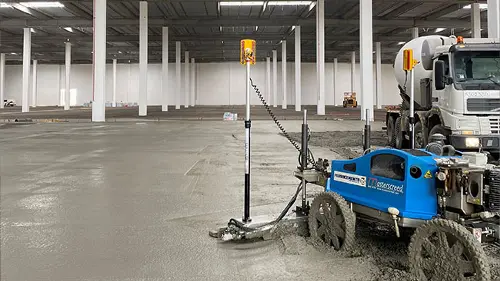

Designing durable concrete with macro-synthetic fibers: a software-based method
A new software-based design method to fully leverage macro-synthetic fiber reinforced concrete, ensuring durability, sustainability, and compliance with European standards
The integration of macro-synthetic fibre-reinforced concrete (MSFRC) into structural applications is gaining momentum due to its advantages in durability, constructability and sustainability. Carles Cots introduces a design methodology supported by CivilMapei – a structural design software which enables engineers to incorporate MSFRC effectively, particularly in precast and industrial applications. CivilMapei facilitates compliance with Eurocode 2(1) and national standards by implementing advanced models for residual strength, crack control and early-age checks. Its use streamlines the design process, allowing for optimised reinforcement strategies and reliable structural performance.
Motivation for using macro-synthetic fibres
Steel corrosion remains a primary limitation to the longevity of reinforced concrete structures. Macro-synthetic fibres offer a corrosion-free reinforcement system with effective post-cracking behaviour, particularly beneficial in aggressive environments or where reduced maintenance is critical.
Benefits include:
- elimination of corrosion-related deterioration
- reduced embodied carbon compared with traditional steel
- simplified handling and placement.
Software-based design framework
CivilMapei builds on over 25 years of validated modules originally created for bridge and civil infrastructure design. These modules have been extended to incorporate the contribution of macro-synthetic fibres in flexure, shear and crack control. The software is available under a free license to promote the adoption of advanced MSFRC solutions in structural applications.
CivilMapei supports design using MSFRC by automating key verifications required by international and national standards. It includes dedicated modules for:
- sectional analysis (eg, beams, walls, tanks)
- 2D plate analysis (eg, slabs, panels)
- industrial pavement design (per TR34(3)).
Supported Standards include:
- Eurocode 2 (EN 1992-1-1)
- fib Model Code 2010(4)
- TR34 (slabs-on-ground)
- National Annexes.

Practical applications
The design tools have been applied to a range of structural elements. Key sectors where MSFRC provides substantial benefits include:
- Modular housing and architecture: precast walls, panels, stair flights and façade elements for modular building systems benefit from improved crack control and durability, enabling thinner sections and more efficient production cycles.
- Hydraulic, utility and energy infrastructure: precast pipes, inspection chambers, underground vaults, utility boxes and transformer cabins achieve high durability and resistance to aggressive environments. MSFRC is especially useful in sanitation, stormwater and energy distribution networks.
- Architectural urban elements: furniture, benches, planters and barrier elements can be produced with enhanced durability and aesthetic consistency using fibre-reinforced mixes.
- Industrial pavements.
- Internal floors: warehouses, logistics centres and production areas benefit from fibre-reinforced concrete due to reduced jointing, high fatigue resistance and improved crack control under repetitive loads.
- External slabs: loading docks, container yards and exterior storage platforms are exposed to varying weather conditions and mechanical loads, where MSFRC provides long-term durability and reduced maintenance.
- Linear infrastructure: roads, access routes, bicycle lanes, airport service areas, tramway slab tracks, port zones, container terminals and water channels are applications where MSFRC enables durable, joint-optimised solutions with lower reinforcement demand.

Material characterisation and input
Accurate modelling of MSFRC relies on proper mechanical characterisation. The software integrates test data based on EN 14651(5), converting results from CMOD-based residual strengths (fR1–fR4) into tensile constitutive models. Available modelling options include:
- rigid-plastic: suitable for conservative ULS design
- multi-linear: suited for serviceability checks, including crack width and deflection.

Characterisation of fiber-reinforced concrete for precast under EN Standards
Standard tests for FRC characterisation:
- EN 14651: Flexural tensile strength on notched beams (150 × 150 × 550mm), providing fLOP and residual strengths fR1 to fR4.
- EN 14889-2(6): Specifies synthetic fibre properties (tensile strength, geometry, anchorage, durability).
Criteria for FRC design based on standard tests
- Rigid-plastic (simplified) model:
- used for ULS design
- assumes constant post-crack strength: fFtu = (1/3) · fR,3
- moment resistance: MRd = (fFtu · b · h²) / 6
- no iteration required; suitable for ductility classes a–c
- • Multi-linear (bilinear) model:
- used for refined ULS and SLS verification
- two linear branches derived from:
- fFt,1 = κ · 0.37 · fR,1k
- fFt,2 = κ · (0.57 · fR,3k – 0.26 · fR,1k)
- strains computed from CMOD and geometry
- requires iterative solution for internal equilibrium and moment–curvature response.

Structural validation and performance analysis
The CivilMapei design engine performs both ultimate and serviceability verifications, including:
- flexural resistance (MRd vs MEd)
- shear strength including fibre contribution (VRf)
- crack width checks per Eurocode 2
- moment–curvature analysis to evaluate ductility.
Precast cabin panel
Concluding remarks

References
- BRITISH STANDARDS INSTITUTION, BS EN 1992-1-1. Eurocode 2. Design of concrete structures - General rules and rules for buildings, bridges and civil engineering structures. BSI, London, 2023.
- FÉDÉRATION INTERNATIONALE DU BÉTON. The fib Model Code for Concrete Structures (2020). fib, Lausanne, Switzerland, 2024.
- CONCRETE SOCIETY. Concrete industrial ground floors. A guide to design and construction. Technical Report 34, Fourth Edition, Camberley, January 2018.
- FÉDÉRATION INTERNATIONALE DU BÉTON. fib Model Code for Concrete Structures 2010. fib, Lausanne, Switzerland, 2013.
- BRITISH STANDARDS INSTITUTION, BS EN 14651. Test method for metallic fibre concrete. Measuring the flexural tensile strength (limit of proportionality (LOP), residual). BSI, London, 2005+A1:2007.
- BRITISH STANDARDS INSTITUTION, BS EN 14889. Fibres for concrete. Part 2 – Polymer fibres. Definitions, specifications and conformity. BSI, London, 2006.









